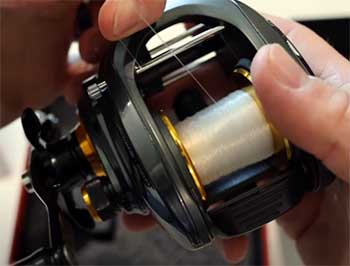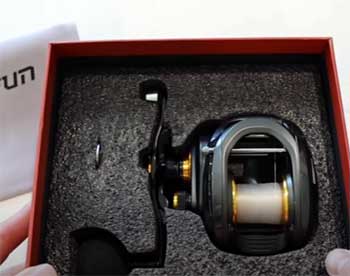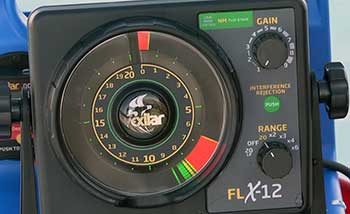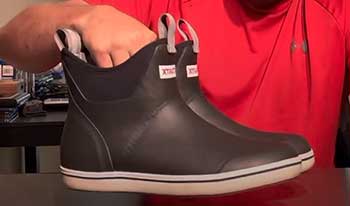If you’re chasing big fish in freshwater or saltwater, the Piscifun Alijoz 400 is a game-changer you need in your arsenal. This baitcasting reel packs a punch with its 38-pound max drag, durable aluminum frame, and smooth casting performance, all at a price that won’t sink your wallet.
Whether you’re battling musky or trolling for tarpon, this reel delivers power and precision. After putting it through its paces, I’m convinced it’s a must-have for anglers who want reliability without breaking the bank.
Trust me, this reel deserves a spot on your rod.
My Experience With The Piscifun Alijoz 400

Let me take you back to a crisp morning on Lake St. Clair, where I first put the Piscifun Alijoz 400 to the test.
I’d heard the hype about its ability to handle big fish, and as someone who’s spent countless hours casting for musky and pike, I was eager to see if it lived up to the buzz.
Spooled with 40-pound braid, I paired the reel with a 7’6” medium-heavy rod and a hefty 3-ounce swimbait, ready to tackle whatever lurked beneath the surface.
Right out of the box, the Alijoz 400 felt solid yet surprisingly light at 11.8 ounces.
The ergonomic design fit comfortably in my hand, and the EVA knobs gave me a confident grip, even after hours of casting.
My first cast was a revelation—smooth, precise, and far-reaching, thanks to the magnetic brake system. I could feel the control as I worked the lure, and when a 40-inch musky hit, the reel’s 38-pound drag didn’t flinch. It was a tug-of-war, but the Alijoz 400’s Hercules Drag System (HDS) held strong, letting me adjust tension on the fly without skipping a beat.
Over the next few weeks, I took it to saltwater for redfish and snook off the Florida coast. The corrosion-resistant materials stood up to the salty environment, and the bait clicker was a lifesaver when running live bait rigs.
I’ll admit, I was skeptical about a budget-friendly reel holding its own against pricier competitors, but this one proved me wrong. From freshwater monsters to saltwater bruisers, the Alijoz 400 performed like a champ, making every trip memorable.
It’s not perfect (more on that later), but it’s become my go-to for heavy-duty fishing.
Pros of The Piscifun Alijoz 400

- Impressive Drag Power
You want a reel that can stop a freight train of a fish? The Alijoz 400’s 38-pound max drag is a beast. Whether I’m wrestling a musky or a tarpon, this reel gives me the muscle to control the fight. The Hercules Drag System uses a carbon fiber and stainless steel combo that feels smooth yet unyielding.
I’ve pulled in 15-pound snappers without the drag slipping, and it’s adjustable enough to fine-tune for smaller species like bass. Compared to other reels in its price range, this drag power is a standout, rivaling high-end models from Shimano or Daiwa.
- Durable and Corrosion-Resistant Build
This reel is built like a tank but weighs less than you’d expect. The aluminum alloy frame, handle, and side cover shrug off corrosion, even after repeated saltwater trips. I’ve dunked it in brackish water and left it in humid conditions, and it still looks and performs like new.
The double-hardened brass gears add a 10% strength boost, which I felt when cranking against heavy loads. Unlike some budget reels that feel flimsy, the Alijoz 400’s premium materials give me confidence it’ll last for seasons.
- Smooth and Long-Distance Casting
Casting with the Alijoz 400 is a dream. The magnetic brake system lets you dial in just the right amount of control, so you’re slinging lures with pinpoint accuracy, even in windy conditions. I’ve hit 50-yard casts with 2-ounce baits, no backlash in sight.
The 8 double-shielded stainless steel bearings keep things silky smooth, and the one-way bearing ensures instant engagement. Compared to competitors like the Abu Garcia Revo, the Alijoz 400 holds its own, offering pro-level casting performance at half the cost.
- Innovative Features for Versatility
The bait clicker is a game-changer for live bait fishing. It’s like having an extra set of eyes—when a fish hits, the audible alarm lets you know instantly, so you’re ready to set the hook. I’ve used it for redfish and loved how it improved my hook-up rate.
The 120mm extended counterbalance handle also gives you extra torque, making it easier to reel in big fish without tiring out. These thoughtful touches make the Alijoz 400 feel like a reel designed by anglers, for anglers.
- Budget-Friendly Value
At around $100-$150, the Alijoz 400 delivers performance that punches way above its price tag. I’ve used reels costing twice as much that didn’t offer the same drag power or durability.
You’re getting features like the bait clicker and high-strength gears that you’d expect from premium brands, but without the hefty price. For budget-conscious anglers or those just starting out, this reel offers incredible bang for your buck, making it a no-brainer for anyone looking to up their game.
Not-So-Good Parts of The Piscifun Alijoz 400
- Occasional Spool Lock Issues

I’ve heard some anglers report issues with the spool lock on the Alijoz 400, and I experienced it myself once or twice.
After about 14 hours of heavy casting, the spool occasionally failed to engage when I turned the handle.
It wasn’t a dealbreaker, and a quick tweak of the drag fixed it, but it’s frustrating when you’re in the heat of the moment.
This seems to stem from the thumb bar design, which feels less robust than the rest of the reel.
It’s not a widespread issue, but it’s worth noting if you’re casting heavy baits repeatedly.
- Drag Adjustment Sensitivity
The drag system, while powerful, can be a bit finicky. I found it tricky to dial in precise settings between, say, 5 and 10 pounds—it’s either too tight or too loose. This was noticeable when targeting smaller fish like trout, where I needed more finesse.
A bit of grease helped smooth things out, but it’s not as refined as a Shimano Tranx. If you’re fishing for big game, this isn’t a huge issue, but for mixed-species trips, it can be a minor annoyance.
- Limited Line Capacity for Mono
If you’re a monofilament user, you might find the line capacity a bit restrictive. I spooled mine with 40-pound mono, and it held less than I expected for a 400-size reel—about 120 yards compared to 150+ yards on similar-sized reels like the Daiwa Lexa.
This isn’t a problem with braid, which I prefer, but it’s something to consider if you lean toward mono for its stretch or affordability. For big fish, you’ll want to stick with braid to maximize capacity and strength.
- Mixed Customer Service Experiences
Piscifun’s customer service gets mixed reviews. When one of my reels arrived with a locked drag wheel, their team was quick to send a replacement, which was awesome. But I’ve read accounts of others struggling to get responses or replacements for defects.
This inconsistency can be a gamble, especially if you’re relying on the reel for a big trip. It’s not a dealbreaker, but it’s something to keep in mind if you encounter issues.
Maintenance Tips For The Piscifun Alijoz 400
- Rinse After Every Trip

To keep your Alijoz 400 in top shape, rinse it with fresh water after every outing, especially in saltwater.
I make it a habit to run it under a gentle stream, focusing on the spool and handle to flush out salt or debris.
Avoid high-pressure sprays, as they can force water into the bearings.
A quick rinse takes two minutes and prevents corrosion, keeping the aluminum frame and brass gears pristine.
I’ve done this after every saltwater trip, and my reel still looks brand-new.
- Lubricate the Gears Monthly
The double-hardened brass gears are a highlight, but they need regular love to stay smooth. I pop open the side plate once a month and apply a thin layer of reel grease to the main gear and pinion. Use a small brush to avoid over-applying, as too much grease can attract dirt.
This keeps the cranking action buttery and prevents wear, especially if you’re throwing heavy lures. I’ve noticed a big difference in performance since making this a routine.
- Oil the Bearings for Smooth Operation
The 8 double-shielded bearings are corrosion-resistant, but a drop of reel oil every few months keeps them spinning like a dream. I use a precision oiler to add one drop per bearing, accessed by removing the side plate. Spin the spool after oiling to distribute it evenly.
This step is crucial for maintaining casting distance and smoothness, especially after heavy use. I’ve found that neglecting this can lead to slight friction, so don’t skip it.
- Check the Drag System Regularly
The Hercules Drag System is a beast, but it can get fussy if debris sneaks in. Every few trips, I loosen the drag star and wipe down the washers with a clean cloth. If the drag feels sticky, a dab of drag grease can smooth it out.
Also, check the drag star for tightness, as it can loosen during long fights. This quick check ensures you’re ready for the next big fish without any surprises.
- Store Properly to Avoid Damage
When I’m not fishing, I store my Alijoz 400 in a dry, padded reel bag to protect it from bumps and humidity. Avoid leaving it in direct sunlight or damp tackle boxes, as this can degrade the EVA knobs and invite rust. I also loosen the drag completely to relieve tension on the washers.
This simple habit has kept my reel in top condition, even after months of storage.
Comparison of Piscifun Alijoz 400 With Other Brands
Let’s put the Piscifun Alijoz 400 up against some heavy hitters like the Shimano Tranx 400, Daiwa Lexa HD 400, and Abu Garcia Revo Toro Beast. I’ve used all these reels, so I can tell you how they stack up in the real world.
The Shimano Tranx 400 is a beast, with a max drag of 25 pounds and a reputation for bulletproof durability. It’s smoother than the Alijoz 400, especially when fine-tuning the drag, and its Hagane body feels indestructible.
But it’s also $300, nearly double the Alijoz’s price. For the extra cost, you get a slightly more refined feel, but the Alijoz’s 38-pound drag and bait clicker give it an edge for big fish and live bait scenarios. If you’re a weekend warrior like me, the Alijoz offers 90% of the Tranx’s performance at half the cost.
The Daiwa Lexa HD 400 is another solid contender, with a 25-pound drag and a beefy stainless steel drive train. It’s great for heavy-duty saltwater fishing, and its T-Wing system boosts casting distance.
However, it’s heavier at 12.3 ounces and costs around $250. The Alijoz 400’s lighter weight and higher drag power make it more versatile for long casting sessions, and its magnetic brake system is easier to adjust than the Lexa’s. If you’re targeting mixed species, the Alijoz is a better all-rounder.
The Abu Garcia Revo Toro Beast is a musky favorite, with a 25-pound drag and a low-profile design that’s easy to palm. It’s smooth and durable, but at $400, it’s a tough sell when the Alijoz 400 delivers comparable power for less.
The Revo’s Infini brake system is top-notch for precision casting, but the Alijoz’s bait clicker and extended handle give it an edge for live bait and heavy lures. Unless you’re a pro chasing tournament-grade performance, the Alijoz holds its own.
What sets the Alijoz 400 apart is its value. You’re getting features like a bait clicker and 38-pound drag that you won’t find on reels under $200 from these brands.
Sure, the Tranx and Revo feel a tad more polished, but the Alijoz 400’s performance-to-price ratio is unmatched. If you’re on a budget but still want to tackle big fish, this reel is hard to beat.
Also Read: Comparison of Shimano Curado And Daiwa Tatula.
Frequently Asked Questions (FAQ)
Is Piscifun Reel Any Good?
Absolutely, Piscifun reels are a solid choice, especially for the price. The Alijoz 400, for instance, offers a 38-pound drag, corrosion-resistant materials, and smooth casting that rivals pricier brands like Shimano or Daiwa. I’ve used it for musky and saltwater species with no issues, and many anglers on forums like Reddit praise its durability for the cost. While it’s not perfect—some report spool lock issues—it’s a fantastic option for budget-conscious anglers who want reliable performance.
Is Piscifun Made in China?
Yes, Piscifun reels are manufactured in China, like many fishing brands, including some models from Shimano, Daiwa, and Abu Garcia. Don’t let the “Made in China” label scare you off, though. I’ve found the Alijoz 400’s build quality to be top-notch, with premium materials like aluminum alloy and brass gears. The key is proper maintenance, especially in saltwater, to keep it performing like a champ.
Do Any Pros Use Piscifun Reels?
While Piscifun isn’t as common on the pro circuit as Shimano or Daiwa, some tournament anglers use their reels, particularly the Alijoz and Carbon X series. On Reddit, I’ve seen posts from anglers who fish competitively and swear by the Alijoz 300 for its value and performance. I haven’t spotted the Alijoz 400 in major tournaments, but its specs suggest it could hold up for serious anglers who prioritize affordability.
What Gear Ratio Is the Piscifun Alijoz 300?
The Piscifun Alijoz 300 comes in three gear ratio options: 5.9:1, 6.6:1, and 8.1:1. The 5.9:1 is great for slower retrieves with heavy lures, while the 8.1:1 is blazing fast for quick line pickup. I’ve used the 6.6:1 for a balance of power and speed, and it’s perfect for musky and pike. Choose based on your fishing style—slower for big baits, faster for smaller ones.
Conclusion: Reel In The Piscifun Alijoz 400
After countless casts and battles with big fish, I’m sold on the Piscifun Alijoz 400. It’s a powerhouse that delivers 38 pounds of drag, smooth casting, and durability at a price that’s hard to beat. Whether you’re a weekend angler or chasing trophy fish, this reel has the features to make your trips epic.
Don’t let its budget-friendly tag fool you—it’s ready to take on freshwater and saltwater giants. Grab one, hit the water, and see why the Alijoz 400 is a reel you’ll love.

